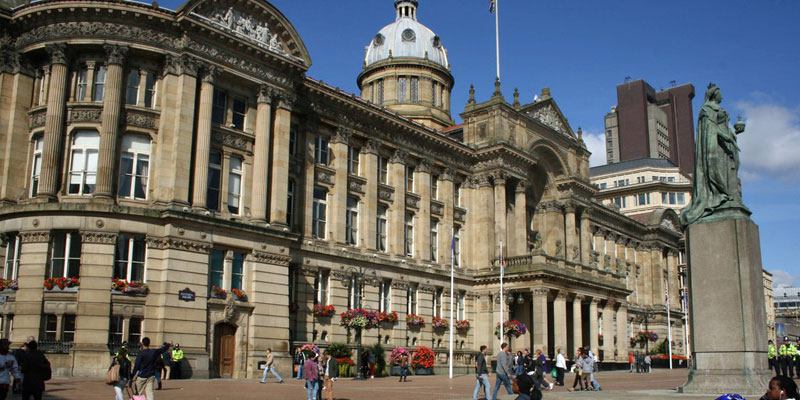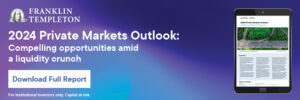Urban wealth funds could invest in local assets to avoid selling them at fire-sale prices and alleviate the financial crisis across councils.
Andy Haldane, former chief economist at the Bank of England and current chief executive of the Royal Society of Arts, made the case for urban wealth funds operating in such a way in a recent contribution to the Financial Times.
An income stream of £100bn each year could be generated for local councils, he conservatively estimated, if half of all public assets were placed in commercially-managed urban wealth funds with a rental yield of 5%.
But sector commentators said that although there was a “germ of an idea” in Haldane’s proposal, it was hard to see how it would work in practice.
Haldane wrote that investing in local assets through an urban wealth fund “combines continuing public ownership of local assets with private sector management of them” and “brings commercial expertise into local regeneration to boost the long-term value of public assets, while avoiding the loss of revenue associated with fire-sale privatisation”.
Urban wealth funds would manage the assets on a pooled but local basis and meet a range of objectives set by local government, “which would retain ownership and an agreed share of future income, with the remainder going to the commercial developer”, he proposed.
These objectives would be “part financial, part civic and environmental”, he said, with the aim of preventing uncontrolled urban sprawl and making “citizen and environmental interests central to local regeneration”.
Haldane acknowledged that local planning rules would be a potential barrier to the regeneration he is proposing. “But because this is public land being put to use in pursuit of a public purpose, a strong case could be made for a distinct public planning regime for urban wealth funds, which would fast-track and streamline existing planning rules,” he said.
Unprecedented scale
Responding to Haldane’s proposal, Richard Harbord, former chief executive of the London boroughs of Richmond and Hammersmith & Fulham, said no one solution existed that would suit all, and noted that relatively few councils are in section 114 territory. “Really the fire sale of assets needs to be avoided if at all possible. It will be damaging to the future ability of authorities to provide services and protect the heritage. Clearly it would be better to keep the assets with the authorities or at the very least in the public sector family,” he said.
Harbord said he understood Haldane’s reasoning for suggesting the use of urban wealth funds but said “more thought and development” would need to go into it with the fund needing to be set out in detail.
“Selling assets to such a fund under commercial management and obtaining a return which would satisfy investors would be difficult and the sharing of costs and income between different types of assets difficult to achieve equitably. I would look at the selling of children’s homes for example over the last few years largely to private equity funds. The need to make them give an adequate return has driven up placement costs to the level that has put many authorities in these current difficulties,” he said.
And Haldane’s proposal to manage them on a pooled but local basis “would need a scale of organisation never before seen”, Harbord said. He added: “I understand that he sees development opportunities for open land but that would be achievable to authorities now if they had targeted support. Authorities and their residents may not warm to this arms length manner of using their resources. There would be more confidence in the proposal if it was firmly public sector, a sort of reverse PWLB.”
Where would urban wealth funds fit?
Commenting on Haldane’s proposals, Chris Buss, a former section 151 officer, said the concept of the urban wealth fund “seems to ignore the reasons why councils sell assets”.
He told Room151: “Assets are routinely sold either to fund future capital spend or fund debt: this is good financial management as it reduces ongoing financial commitment that hit the council tax if the asset is a general fund property.
“Similarly, surplus HRA assets (excluding RTB receipts) are used to fund HRA capital spend. The exception to this is where asset sales are used to fund one off items that are normally revenue costs but under either the general dispensation of using capital receipts flexibly to fund some costs relating to reorganisations or council specific ‘exceptional financial support arrangements’. These tend to be larger one off costs that cannot be met from revenue due to insufficient resources and thus are met from capital sales. Neither of the two exceptions should be ongoing, although some EFS arrangements are starting to be like that due to the very large costs incurred.”

It is therefore difficult to see how urban wealth funds would work, “as the current asset sales are meeting either a genuine policy of reducing or removing debt by using assets to reduce borrowing need or meeting one off exceptional costs”, rather than funding day to day running costs.
Buss concurred with Harbord that the number of councils having to make asset sales “they would rather not have to make” due to financial difficulties and the need to raise substantial sums or cut costs, or both, is presently still a minority.
Buss added that he was also “naturally nervous” of any ‘new innovation’ with the private sector “as many councils are still paying for the last such joint arrangement, otherwise known as PFI. Remember the private sector are not naturally guided by altruism but by the profit motive.”
Untapped potential?
In his article for the Financial Times, Haldane stated that the urban wealth fund model he is proposing is “tried and tested internationally”, having been “deployed successfully at a local level” in countries such as Sweden, Germany, Denmark, Hong Kong, Singapore and the US.
Haldane’s article concluded: “The answer to the financial plight facing English councils may be sitting under their noses. If central government could look beyond the end of theirs – ceding control to a set of local urban wealth funds – a high-income, housing-rich, net zero civic asset of huge potential could be unleashed.”
—————
FREE bi-weekly newsletters
Subscribe to Room151 Newsletters
Follow us on LinkedIn
Follow us here
Monthly Online Treasury Briefing
Sign up here with a .gov.uk email address
Room151 Webinars
Visit the Room151 channel














